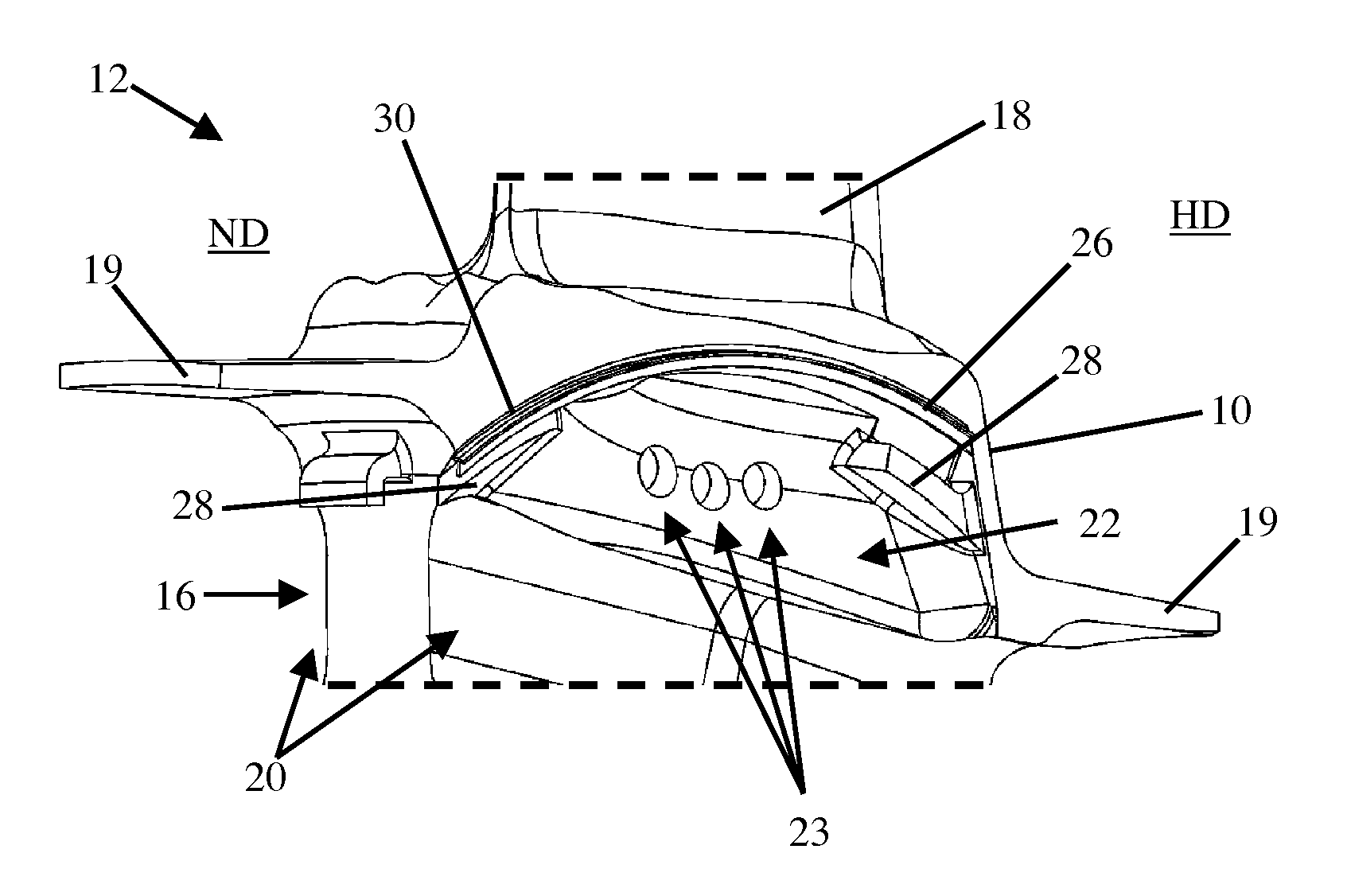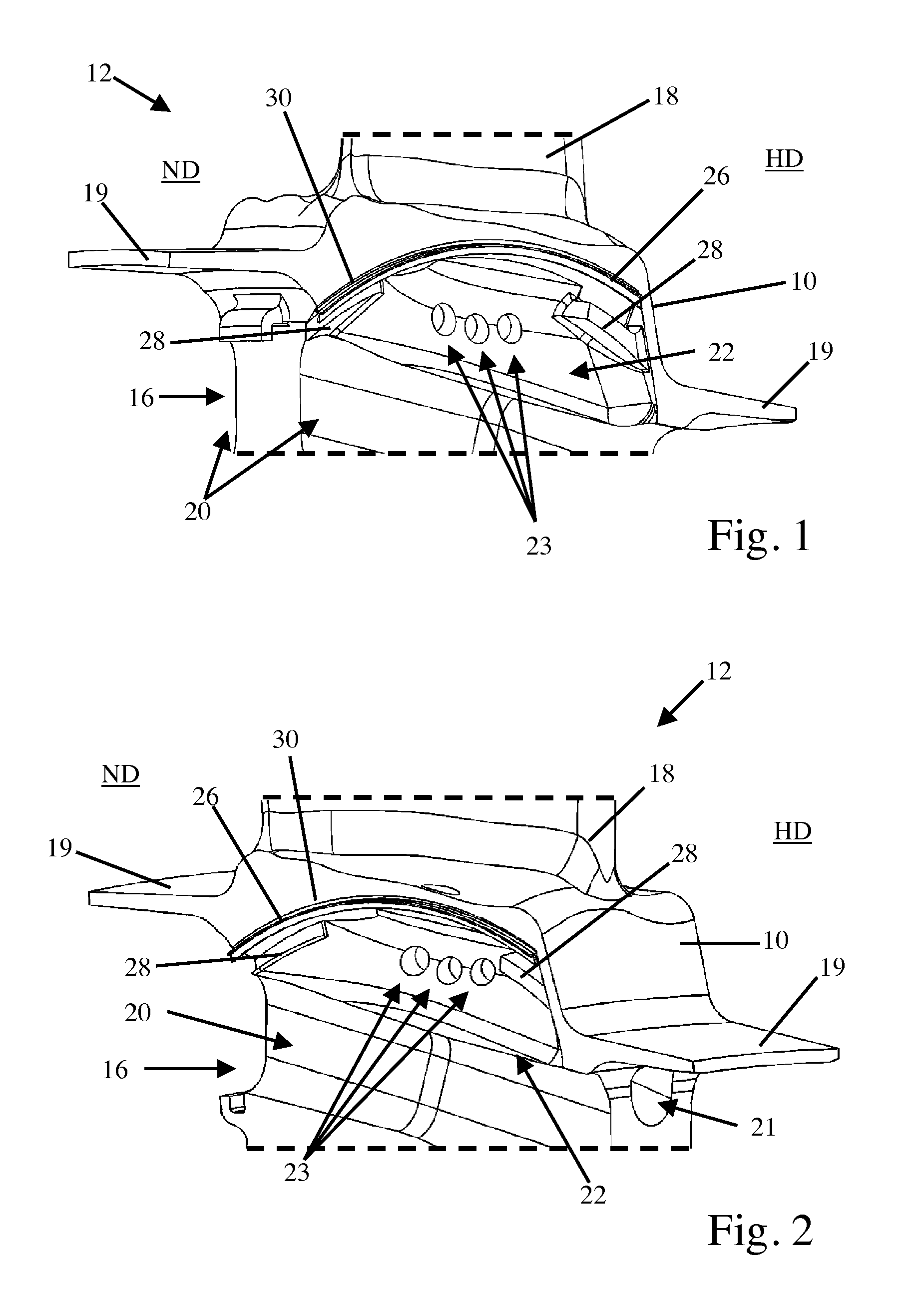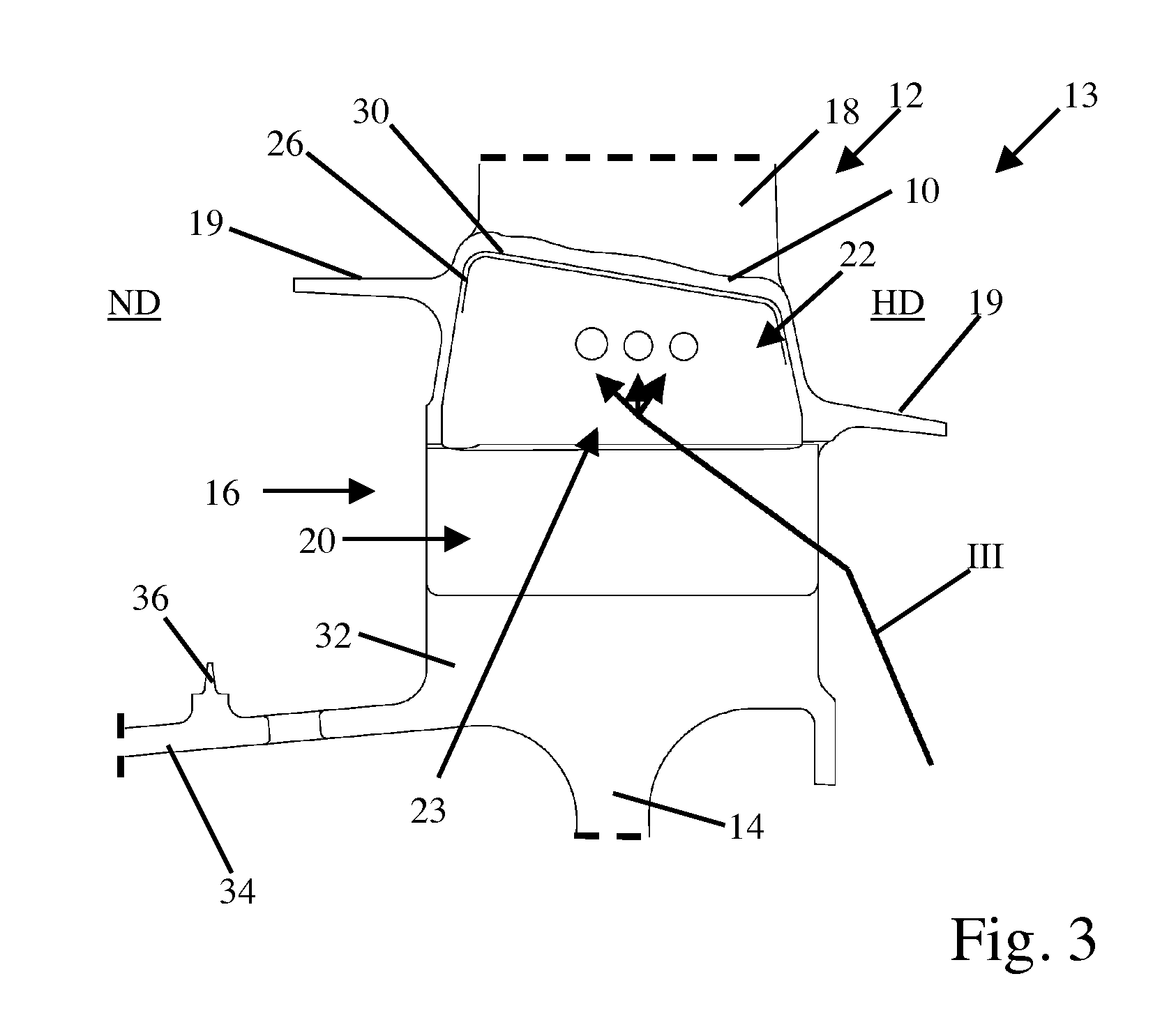Rotor for a turbo machine
a technology of rotating blades and rotating wheels, which is applied in the direction of climate sustainability, air transportation, leakage prevention, etc., can solve the problem of not being able to provide optimal cooling air for rotating blades, and achieve the effect of improving the supply of cooling air
- Summary
- Abstract
- Description
- Claims
- Application Information
AI Technical Summary
Benefits of technology
Problems solved by technology
Method used
Image
Examples
Embodiment Construction
[0025]FIG. 1 shows a schematic perspective view of a rotating blade 12 seen from the low-pressure (ND) side of a rotor (not shown). FIG. 1 will be explained in the following in conjunction with FIG. 2, in which a schematic perspective view of the rotating blade 12 shown in FIG. 1 is illustrated, viewed from the high-pressure (HD) side of the rotor.
[0026]The rotor, which is designed presently in integral BLISK (Bladed Disk) construction for a turbine stage of an aircraft engine, comprises a basic rotor body 14 (see FIG. 3), which is joined cohesively in a way known in and of itself to several rotating blades 12. A radially inner region (relative to an axis of rotation of the rotor) of a blade element 18 connecting to a blade platform 10 can be recognized in FIG. 1 for the illustrated rotating blade 12. Blade platform 10, together with projections formed on the low-pressure (ND) side and the high-pressure (HD) side of the rotor, forms a blade shroud 19 for the at least partial boundar...
PUM
| Property | Measurement | Unit |
|---|---|---|
| Pressure | aaaaa | aaaaa |
Abstract
Description
Claims
Application Information
 Login to View More
Login to View More - R&D
- Intellectual Property
- Life Sciences
- Materials
- Tech Scout
- Unparalleled Data Quality
- Higher Quality Content
- 60% Fewer Hallucinations
Browse by: Latest US Patents, China's latest patents, Technical Efficacy Thesaurus, Application Domain, Technology Topic, Popular Technical Reports.
© 2025 PatSnap. All rights reserved.Legal|Privacy policy|Modern Slavery Act Transparency Statement|Sitemap|About US| Contact US: help@patsnap.com



